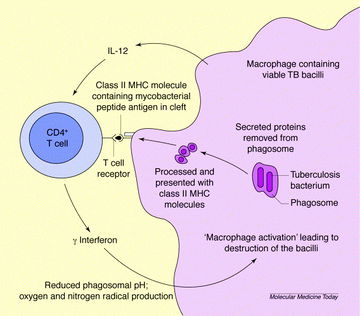Both the acquired immune system and innate immune system has a memory. And BCG vaccine against tuberculosis can stimulate this memory. After a BCG vaccination, the innate immune system responds better to a wide range of other infections. Mihai Netea and colleagues from Radboud university medical center discovered and described how that works. They think that the old vaccine could be useful for specific target groups, such as the elderly.
BCG, a vaccine against TB, was discovered in the 1920s and is one of the most used vaccines worldwide. In the Netherlands, the vaccine no longer falls within the national vaccination program. Now that it is known that the vaccine can give a boost to the innate immune system, Mihai Netea and his colleagues are calling for more research to determine whether the vaccine can prevent infections in certain risk groups.
During a bacterial infection, monocytes penetrate the infected tissue where they differentiate/ change into macrophages >> carry out first line of defense: destruction of the intruder. The acquired immune system responds more slowly than the 1st line, to an unknown intruder but is specifically targeted at a specific intruder. The acquired immune system also has a memory so that it responds faster to the same threat. Research revealed the innate immune system also has a memory but this is not specific. Netea and his colleagues refer to this as ‘trained immunity’.
Shortly after introduction of the BCG vaccine it was noticed that not only tuberculosis occurred less frequently but young children also died less due to other pathogens. In volunteers who received a BCG vaccination, she observed an increase in cytokine production and in the number of receptors that play a role during the recognition of intruders. This effect was sustained until 3 months after vaccination. The scientists discovered that this was because the DNA required was more easily reachable. Netea: “The DNA needs to be read out for the required proteins to be produced. Prior to the vaccination the DNA was hidden so to speak and was consequently difficult to read out. Vaccination ensures that the DNA is exposed.”
Mice without cells from the acquired immune system were administered a potentially lethal quantity of the fungus Candida albicans. One part of the group received a BCG vaccination 2 weeks before this and the other part received a placebo. The BCG-vaccinated animals all survived the fungal infection, whereas in the placebo group more than half of the animals died. As a result of this study the researchers concluded that the effects can be ascribed to the innate immune system.
Netea: “I do not think it is worthwhile introducing BCG again on a large-scale but it would be useful to target it at specific groups. One such example is elderly people who are discharged from hospital and who often experience a relapse when they are back home again. Another possible use is as a booster for other vaccines.” In the coming years the researchers want to investigate such applications. http://www.ru.nl/english/news-agenda/vm/health/2014/old-vaccine-trains/

A diagram that shows how CD 4 T cells stop Mycobacterium tuberculosis. Image: Molecular Medicine Today.






Recent Comments